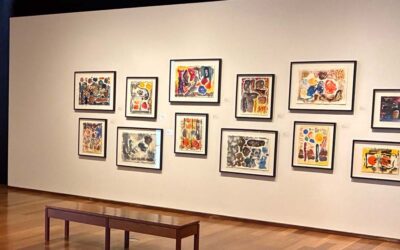Museum Digital Project Roles for Staff, Volunteers, and Interns

Rachael Cristine Woody
The composition of museum workers is often a mixture of staff, contractors, volunteers, and interns.
Museum digital projects are inherently complex and require an understanding of the technology involved. This array of complexity can sometimes silo museum digital projects as a staff-only project. However, the onset of COVID-19 has increased the pressure on museums to provide even more of their collections online, even while still chronically understaffed. Even in non-pandemic times there is room for including volunteers and interns on digital projects—as long as that is done thoughtfully.
Museum Digital Project Activities
Before we delve into the roles staff, volunteers, and interns can hold during a digital project; let’s review the activities that make up a digital project.
Activities Can Include:
- Object Preparation (for digitization)
- Digitization
- Digital File Management
- Research
- Cataloging
- Content Creation (separate from the catalog)
- Publishing
Tip: For more information on what activities make up a digital project please see What to do When It’s Your First Museum Digitization Project via Lucidea’s Think Clearly Blog.
Staff Roles
Staff, by nature of their employment, are the most consistent presence in a digital project. Additionally, staff have typically received the most training and have the most experience with digital projects. As such, their role will include establishing the structure of the project as well as overseeing the quality of work done. Staff will be responsible for establishing best practices to follow and offering training to other team members. Staff possess the core competencies to execute any aspect of a museum digital project, but should focus on the areas that require their expertise and oversight. Reviewing digital files and finalizing content for publication online are primary areas for staff focus if they have a team of people assisting in other project areas.
Intern Roles
Interns are in learning-mode. They’ve usually received some training onsite and have an educational foundation regarding museum digital projects. They may have little to no experience, which is why internships can be so valuable. Internships, by their nature, are short-term (usually 3 to 6-months), but have a regular and consistent rhythm to them. Interns can assist with ongoing tasks that require a moderate level of digital best practice competency. Digitization, digital file management, research, and basic catalog data creation (in the CMS) are all areas where interns can help.
Volunteer Roles
Volunteers may have past-career expertise or they may be in a similar learning-mode to interns. Assessing what knowledge a volunteer has is required in order to determine what training is needed. Volunteer roles are usually long-term in nature and (if run appropriately) should have a consistency of at least one shift a week. An assessment of competencies as well as availability will aid in determining where a volunteer can be of most service. If technical competency is low, object preparation, research, and initial data capture can be great areas for a volunteer to support. If technical competencies are high, the volunteer can also assist with ongoing activities such as digitization and cataloging within the CMS.
Conclusion
Now that museum digital project roles are established, the next posts will discuss how to ethically adapt staff capacity and create opportunities for volunteers and interns, as well as outline strategies from how to effectively work with a team composed of staff, interns, and volunteers.
Additional Reading
Please visit these posts via Lucidea’s Think Clearly Blog for more information on approaching digital projects thoughtfully and the different activities that make up museum digital projects.
5 Prompts to Prioritize Museum Digitization Projects
A Thoughtful Approach to Museum Digital Project Creation
How to Establish Museum Digital Project Core Areas
What to do When It’s Your First Museum Digitization Project
Webinar: Volunteer Activity Ideas for Libraries, Archives, and Museums
And, of course, don’t forget to check out Lucidea’s webinar suite for more on digital projects.

Rachael Cristine Woody
If you’d like to learn more about this topic, register here for Rachael’s upcoming webinar, “Museum Digital Projects: Strategies for Working with Staff, Volunteers, or Interns” on July 27, 2022. Rachael Cristine Woody advises on museum strategies, digital museums, collections management, and grant writing for a wide variety of clients. In addition to several titles published by Lucidea Press, she is a regular contributor to the Think Clearly blog and an always popular presenter. And remember to check out Lucidea’s Argus solution for powerful and innovative museum collections management.
Never miss another post. Subscribe today!
Similar Posts
From Preservation to Resilience: An Introduction to Building Resilient Digital Collections
Preserving a digital collection is a job that is never done. But what if we shifted our focus from preservation to building digital resilience?
Client Spotlight: MacLaren Art Centre Goes Beyond Collections Care to Access and Growth
“As our needs evolved, it became clear that our existing CMS was no longer working for us. Not only do we need to perform basic collections care, we need a system that will support public access, enable growth, and match our innovative strategies.”
Museum Collections Online: Digital Storytelling Blog Series Roundup
An overview of 10 blog post series that highlight how museums can leverage online collections and digital storytelling platforms, strategies, tools, and best practices.
How Museums Can Broaden Access and Improve Accessibility with Digital Storytelling
Museum expert Rachael Cristine Woody explains how digital storytelling expands access and improves accessibility of museum collections with inclusive multimedia formats.




Leave a Comment
Comments are reviewed and must adhere to our comments policy.
0 Comments